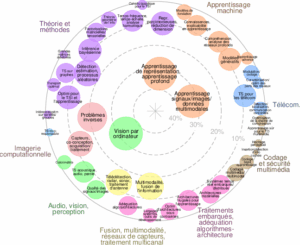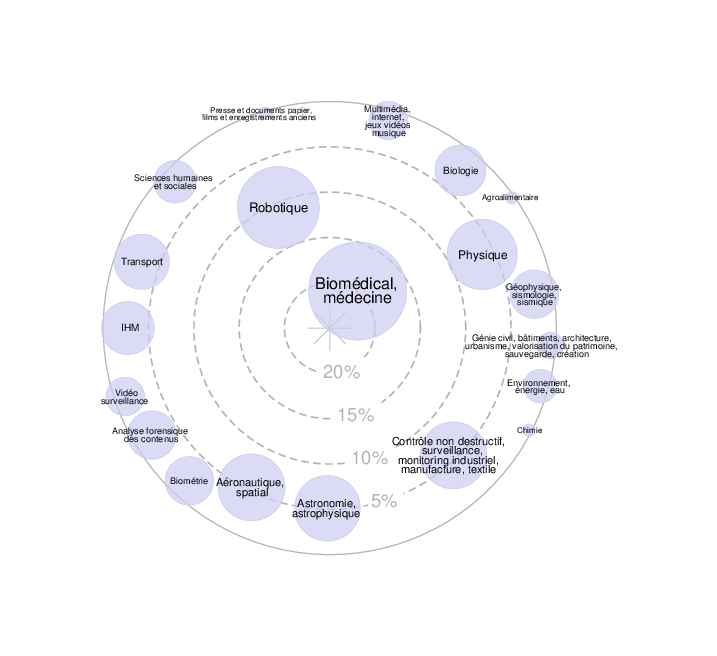Stage M2
Internship supervisors: Eric Thiébaut, Michel Tallon
@ : eric.thiebaut@univ-lyon1.fr, mtallon@obs.univ-lyon1.fr
Address/Workplace: CRAL – site Charles André : 9 avenue C. André, St Genis Laval
Hosting research team: AIRI
Internship title: Adaptive optics control and learning
Summary of proposed work:
Context: Adaptive optics (AO) systems are used by most if not all current large telescopes to counteract the effects of the turbulence on the image quality and achieve diffraction limited angular resolution (i.e. λ/D). AO systems work by sensing the wavefront after its correction by a deformable mirror whose shape is controlled considering the departure of the measured wavefront to the ideal one (e.g. a flat wavefront). The AiRi team at CRAL is leading a project, UPCAO (funded by the French ANR), targeted at developing better algorithms and methods to control in real time (i.e. faster than 1,000 times per second) the shape of the wavefront given measurements by a wavefront sensor (WFS). The objective is to provide optimal wavefront correction under varying observing conditions for the THEMIS AO system, for SAXO+, and for future AO systems on ELTs. There are several ideas to improve current AO control systems: (i) improve the model of the AO system, (ii) account for the variable and uneven quality of the WFS measurements notably the fact that not all measures are always valid, and (iii) account for the spatio-temporal statistics of the turbulence to anticipate its evolution and reduce the effects of the delay between the times of measurements and of the correction by the mirror.
Research directions:
- Modeling the AO system: To compute the wavefront correction, AO real time controllers assume a model of the behavior of the components of the AO system notably the wavefront sensor (WFS) and the deformable mirror (DM). Intuitively, the closer the model to reality the better the correction. The behavior of the instrument may be complicated (non-linear) and depends on the operating conditions. It is thus important to develop flexible models whose parameters can be calibrated and updated while the AO system is running (in closed-loop). We are currently considering affine approximations of the possibly non-linear behavior of the system that can be calibrated in real-time by a perturbative method. Another possibility to investigate is to exploit deep learning to automatically build the structure of a general non-linear model and to learn its parameters in real-time.
- Wavefront reconstruction: For a linear wavefront sensor (WFS), the reconstruction of the wavefront shape given the measurements and accounting for their uneven quality amounts to solving an inverse problem which has a closed-form solution. For large systems, this solution may be computed in real-time by means of accelerated iterative methods [1]. For new non-linear WFS, fast reconstruction methods compatible with the constraints of real-time have to be developed and AI based methods are emerging as competitive candidates.
- Modeling and learning the spatio-temporal behavior of the turbulence: Prediction of the temporal evolution of the wavefront is the key to compensate for the delay between the acquisition of wavefront sensor (WFS) measurements and the time at which the shape of the deformable mirror (DM) can effectively account for these measurements. We are developing a fast approximation of the covariance [2] that can be exploited to learn and apply the spatio-temporal statistics of the wavefront. Another possibility is to develop AI based methods.
[1] Béchet+, “Comparison of minimum-norm maximum likelihood and maximum a posteriori wavefront reconstructions for large adaptive optics systems’’ in J. Opt. Soc. Am. A, 26, 497-508 (2009) https://doi.org/10.1364/JOSAA.26.000497
[2] Thiébaut+, « Beyond FRiM, ASAP: a family of sparse approximation for covariance matrices and preconditioners. » Adaptive Optics Systems VIII. Vol. 12185. SPIE, 2022, https://arxiv.org/pdf/2311.17721
Nature of the financial support for the internship: Labex LIO or team funding
Potential for a follow-up as a PhD thesis: Yes





